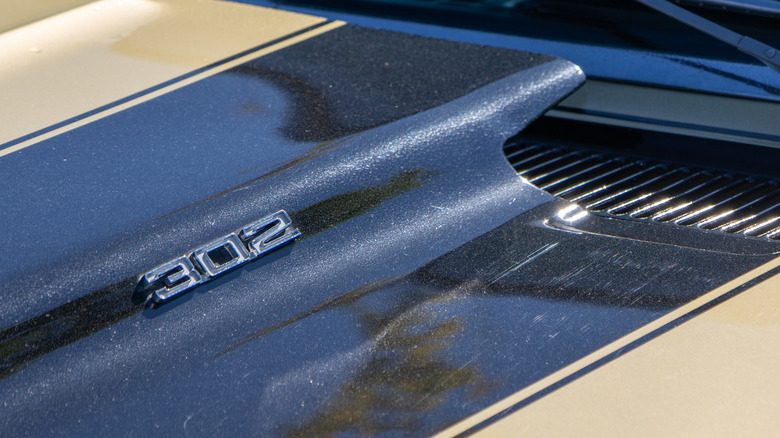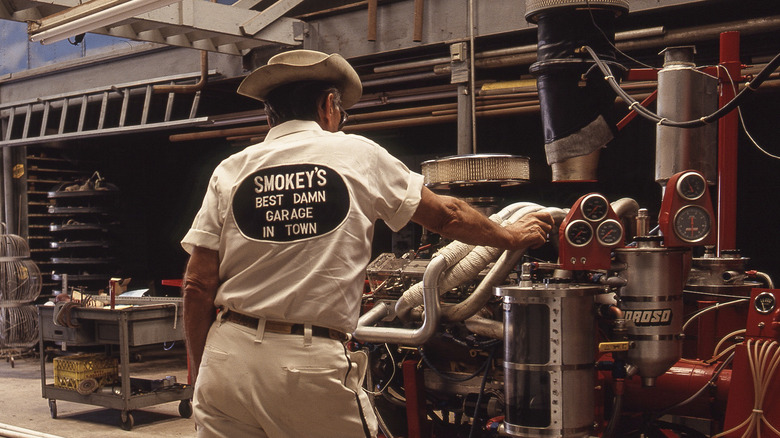When Did Chevy Make Hemi Engines? A Brief Look At The History Behind Them
Chrysler (and its various automotive brands) will forever be known in popular automotive culture as the company behind the Hemi V8 engine. Whether it was the 426 Street Hemi of the '60s or the contemporary Hemis that powered late-model Dodge Scat Packs and Hellcats, for most people, "Hemi" equals "Chrysler." The power of the Hemi brand is so strong that Stellantis, the current owners of Chrysler and Dodge, has bowed to consumer demand and is now bringing the Hemi V8 back following a short hiatus.
But while Chrysler is the undisputed king of the Hemi, it's far from the only car company to experiment with the hemispherical induction chambers from which the Hemi gets its name. Ford famously had the "Semi Hemi" Boss 429 engine, for example, and there are also several non-V8 engines that can be considered Hemis, even if their marketing didn't lean into it like Chrysler did.
But did you know that during a brief period in the late 1960s, there was also a secret prototype Hemi variant of the legendary small-block Chevy V8? Let's take a look back at the rare Chevrolet Hemi 302 born out of the era's experimental road racing scene.
Chevy's answer to the Boss 302
Before we get to the rare Hemi small block Chevy, we have to step back for a larger look at the legendary, race-bred first-generation Camaro Z/28. The original Z/28 was engineered to meet SCCA Trans Am series competition regulations, which limited engine displacement to 5.0 liters. To work within these rules, Chevy developed the DZ302 V8, a de-stroked version of the small block that paired a 327-CI block with the crankshaft from a 283-CI V8, resulting in a total displacement of 302 CI, or 4.9 liters.
The DZ302 didn't just help propel the Camaro Z/28 to success in Trans Am racing; it was a potent, exhilarating engine on the street as well. The little small block was able to rev up to 7,000 rpm and make some serious horsepower for an engine of its size. To get even closer to the race car's power level, Chevy offered a pricey and rare cross-ram intake setup for the 302 that added dual four-barrel Holley carbs for a major boost in power.
But with the strict limit on displacement, some racers wanted to push the 302 even further, with the hopes of taking down Ford's powerful Boss 302. In 1968, Chevy, with the help of legendary, rule-skirting racer and engineer Smokey Yunick, engineered a prototype, all-aluminum 302 that didn't just have the cross-ram intake, but an entirely new Hemi-head package.
The ultimate '69 Camaro
Because it never reached mass production, there's no telling how well the Hemi 302 would have performed. But knowing Smokey's list of accomplishments with the small-block Chevy, the Hemi-Z could have been dominant. In the end, the Camaro Z/28 proved to be plenty competitive even without the experimental Hemi heads, and the Chevy Hemi 302 program never went beyond the prototype stage. There are very few prototype Hemi 302s in existence, one of which sits under the hood of an ultra-rare 1969 Camaro Z/28.
Chevy did indeed build a Hemi V8, though it was always more of an experimental racing engine than something that was ever destined for mass production. Yet the rare Chevy Hemi's existence only helps to build on the legend of the DZ302. Sure, Chrysler will forever be known as the Hemi company, and the 302 cubic-inch V8 will always be most associated with Ford's Boss 302 program, but the equally potent Chevy 302 V8 is an engine worthy of an important spot in motorsport and muscle car history.


